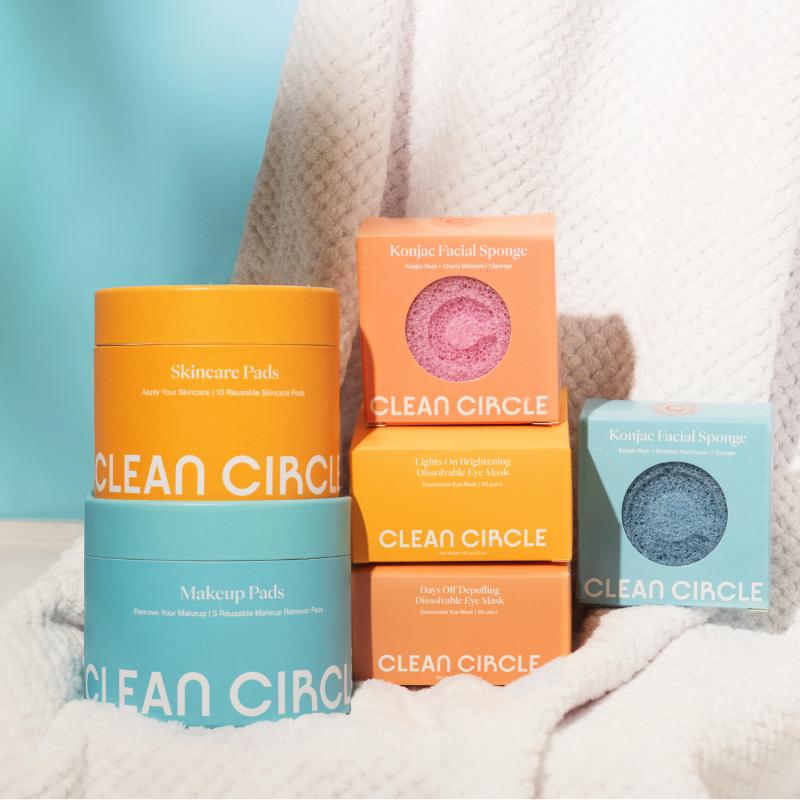The Future of Zero-Waste Beauty: Key Materials, Trends, and Innovations for 2025
Share
The Future of Zero-Waste Beauty: Key Materials, Trends, and Innovations for 2025
Beauty brands are under pressure to rethink how they make and package products. Single-use plastics and overflowing landfills can't be ignored anymore. People want less waste, cleaner ingredients, and smart alternatives that care for both skin and planet.
Zero-waste beauty offers a way forward. It's more than a trend—it's a shift in how we think about everything from containers to formulas. As demand grows, companies are racing to invent unheard-of materials and creative new ideas. This post covers the standout materials, top trends, and new breakthroughs shaping a greener future for beauty.
Why Zero-Waste Matters in Beauty
Zero-waste beauty isn’t just about skipping the trash bin. It’s become a response to big problems that the beauty industry can’t ignore—soaring waste, pollution, and rising demand for clean, honest products. Understanding why zero-waste matters helps us see why brands, shoppers, and lawmakers are all changing the way beauty works.
Environmental Impact of Traditional Beauty Products
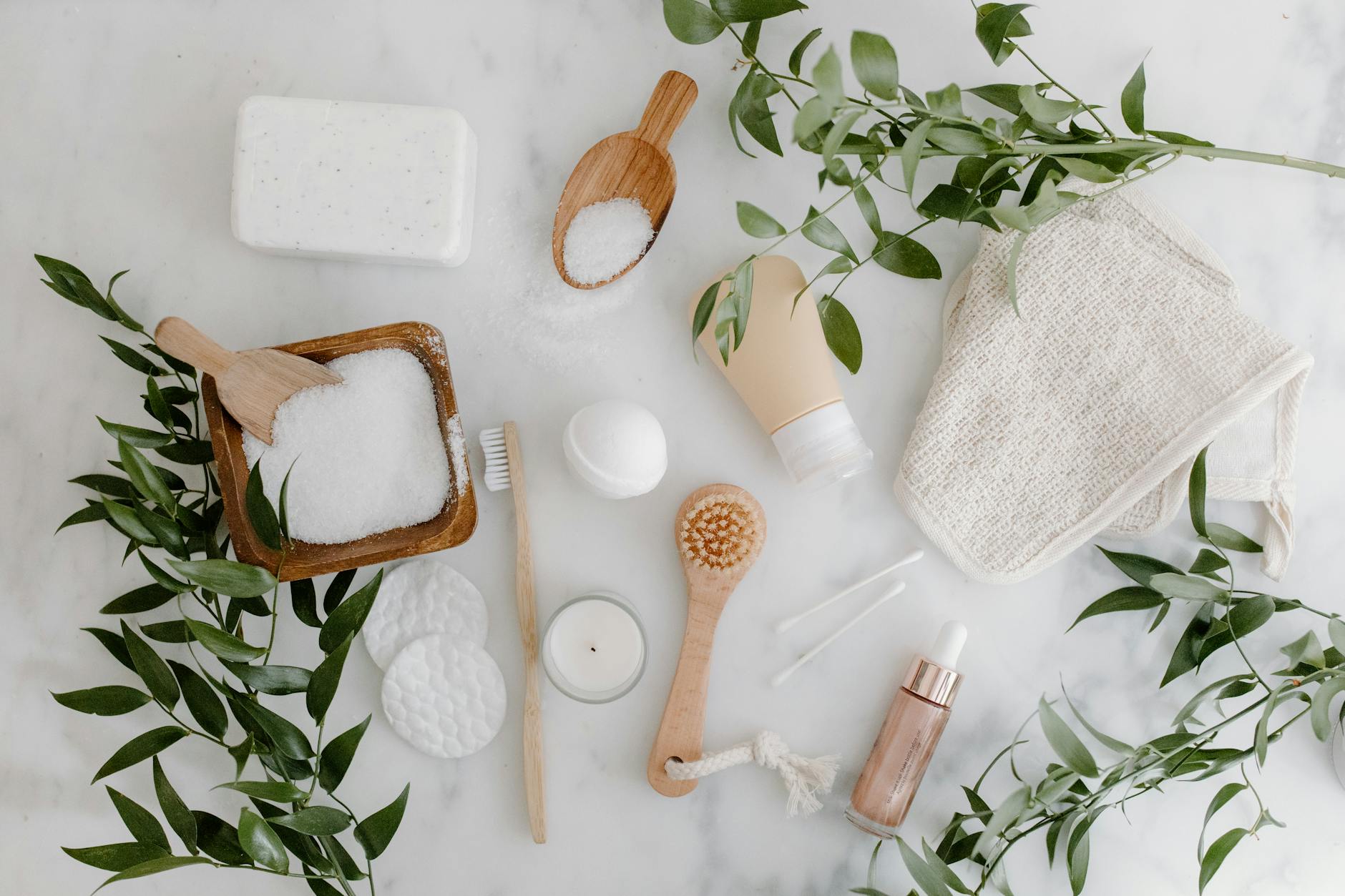 Photo by Tara Winstead
Photo by Tara Winstead
Let’s be honest—a peek under any bathroom sink shows the problem. Bottles, tubes, jars, and wrappers pile up. Most are single-use plastics. Many can’t be recycled. They often end up in landfills or oceans, breaking down into microplastics that never really go away.
Consider these facts:
- Beauty packaging produces over 120 billion units of waste each year worldwide.
- Microplastics from scrubs and cleansers wash down drains and slip past water filters.
- Chemicals and dyes from products can seep into waterways, harming wildlife.
It’s not just containers. Formulas filled with synthetic ingredients and palm oil often damage forests and marine life. Each product leaves a mark—far beyond our bathroom mirrors.
Consumer Awareness and Market Shifts
Today’s shoppers aren’t looking away. Many now read ingredient lists, research packaging, and support brands that align with their values. Social media, ingredient-tracking apps, and viral campaigns push beauty companies to ditch waste and rethink formulas.
What’s driving this?
- Transparency: People want brands to explain what’s in their bottles.
- Minimalism: Less clutter and more multi-use products appeal to busy routines.
- DIY and refill: Consumers try reusable jars, bulk refills, and even making their own beauty blends at home.
This wave means zero-waste isn’t just a buzzword—it’s becoming a top selling point. Brands that ignore it miss out on a growing, loyal customer base.
Government Regulations and Industry Responses
Laws are catching up and pushing the movement forward. Countries and states are banning single-use plastics, taxing excessive packaging, or setting strict recycling rules. The European Union, for instance, now asks for recycling plans and clear labeling. California and New York have set timelines for phasing out microbeads and certain chemicals.
Beauty brands can’t ignore these changes, so many are:
- Launching refill programs and recycling take-back schemes.
- Switching to compostable, recyclable, or reusable packaging.
- Reformulating without microplastics or banned substances.
These shifts reshape how products look, feel, and even work. It’s not just about following rules—it’s about reimagining beauty from the inside out.
Innovative Materials in Zero-Waste Beauty
New materials are changing how we think about beauty—and helping brands turn waste into something valuable. Today, packaging and formulas aren’t just less wasteful, they add to the story of a low-impact routine. Let’s look at three ways zero-waste beauty gets a boost from smart material choices.
Biodegradable Packaging Alternatives
 Photo by Polina ⠀
Photo by Polina ⠀
Beauty packaging is moving far beyond plastic and glass. More brands now use biodegradable materials that break down quickly and leave little trace behind.
Some of the most exciting options include:
- Bamboo: A fast-growing plant, bamboo is strong, lightweight, and compostable. Lids, jars, and brushes made from bamboo look sleek and cut down on petroleum-based plastics.
- Mushroom packaging: Mycelium, the root structure of mushrooms, forms sturdy packaging that composts in just a few weeks.
- Paper-based tubes and wrappers: With special coatings from natural waxes, these replace traditional tubes for balms, sticks, and powders.
These new choices help packaging skip the landfill and go back to nature. When brands use biodegradable containers, they lower the need for recycling and support a true circular system.
Refillable and Reusable Solutions
Refillable beauty isn’t just having a moment—it’s redefining what “waste” means. Now, one container can last for years, with fresh formulas popping in as old ones run out.
This zero-waste approach works in several ways:
- Refill stations: Some stores let you bring your own jars and fill up on cleansers or shampoos.
- Cartridge refills: Lightweight pods slide into stylish containers with little or no mess.
- Return and reuse: Brands ship refills in minimal packaging. Empty bottles go back, get cleaned, and are used again.
For shoppers, refillable options blend ease with less guilt. No more throwing out heavy jars just to buy the same one again. These systems rely on smart design and durable, sometimes even luxurious, materials—think glass, ceramic, or even recycled aluminum that feel good in your hand.
Plant-Based and Upcycled Ingredients
Beauty formulas are changing from the inside, too. Old-school products used synthetic chemicals and ingredients from non-renewable sources. Now, plant-based and upcycled materials take center stage.
Brands are:
- Switching to plant-based actives: Squalane from sugarcane, vitamin C from fruit peels, and jojoba instead of petroleum jelly are common swaps.
- Using upcycled byproducts: Coffee grounds, fruit pulp, and even rice husks (once seen as waste) get turned into scrubs, masks, and exfoliators.
- Prioritizing renewable sources: Ingredients come from crops that regrow quickly and don’t hurt soil or biodiversity.
Formulas made this way support farms, cut down on waste, and often work better for sensitive skin. Upcycling also gives farmers and food makers extra income—everyone wins, even your bathroom shelf.
These next-generation materials close the loop, making beauty routines cleaner from the outside in.
Emerging Trends Shaping the Industry
New habits are shaping how we shop for beauty, and brands are racing to keep up. Forward-thinking companies now explore ways to reduce waste not just in packaging, but in formulas and supply chains, too. These shifts aren’t isolated—they connect, sparking bigger changes. Let’s look at what’s leading the charge for zero-waste beauty and how different players drive new standards in a crowded market.
Waterless Beauty Products and Solid Bars
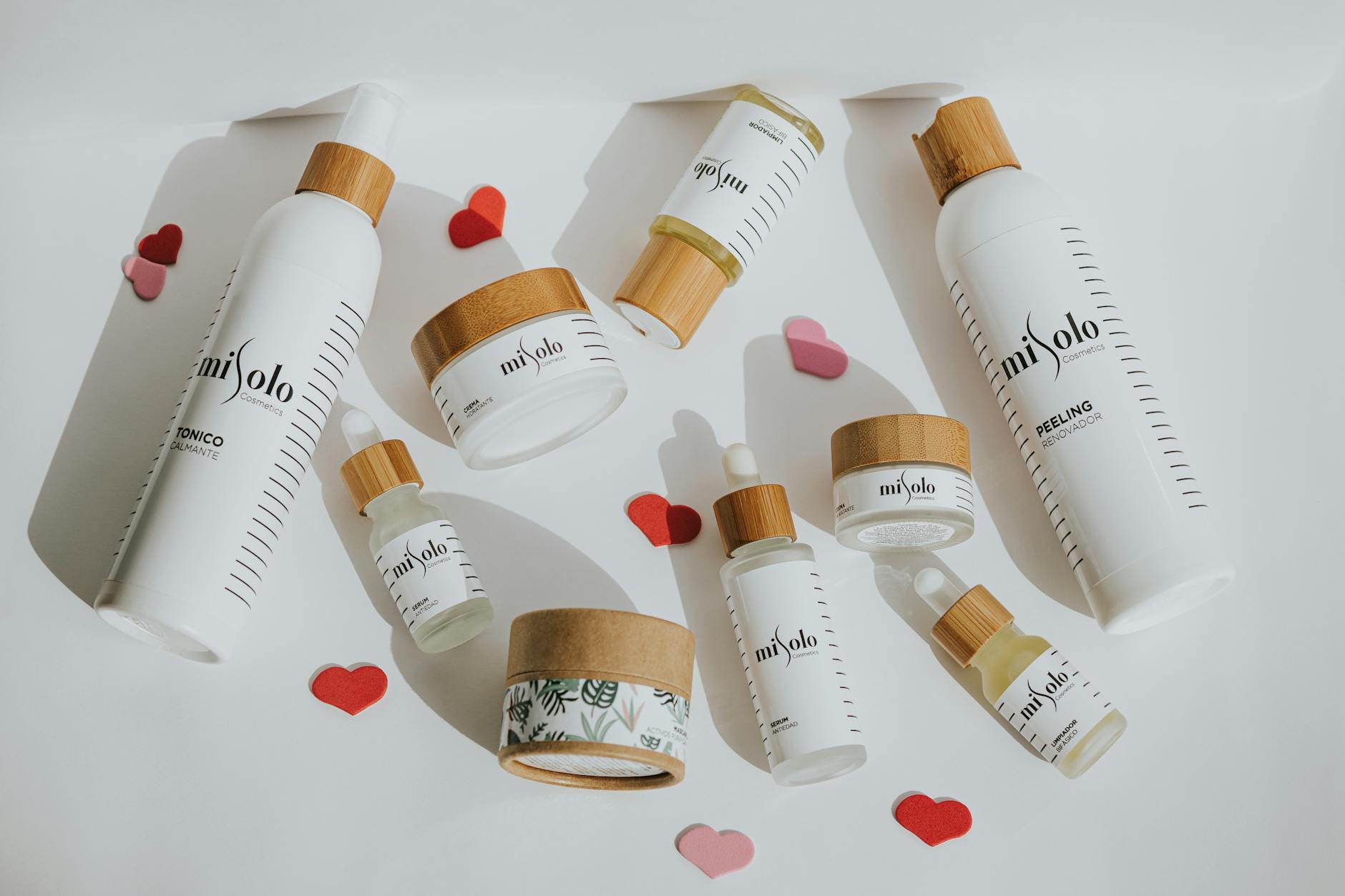
Photo by Misolo Cosmetic
Water is often the main ingredient in many beauty products, but hauling water-heavy formulas means more packaging, higher shipping emissions, and bigger footprints. The shift to waterless beauty is changing that. Brands now create powders, tablets, and solid bars for everything from cleansers to serums.
Why is this trend catching on?
- Solid bars use minimal or no plastic. Many come in simple cardboard or compostable wraps.
- Waterless formulas are often more concentrated, so you use less.
- Less packaging means less to throw away, and bars last longer than liquid versions.
Brands like Ethique and Lush set the pace here, proving bars and powders work well for shampoo, conditioner, and face care. It’s not just about skipping bottles—going waterless means fewer preservatives, simpler labels, and less environmental cost.
On-Demand and Personalized Beauty
Zero-waste is getting personal. Instead of a “one-size-fits-all” product, the latest trend is beauty that’s tailored for you—mixed, dispensed, or delivered only when needed.
What does this look like for zero-waste?
- On-demand mixing: Brands like Function of Beauty and Prose custom-blend products per order. Smaller batches mean less expired stock and less thrown-out packaging.
- Single-dose and refill pods: Instead of tossing a full bottle, you might refill a reusable container with just what you need. This reduces overproduction and packaging waste.
- In-store refills: Some stores now offer touchless stations where you can mix or refill products to your specs, cutting back on single-use plastics.
This trend combines luxury with sustainability. Brands get to innovate and stand out, while shoppers enjoy formulas that fit their unique needs—without feeling wasteful.
Collaborative Industry Initiatives
No brand solves zero-waste alone. Major progress happens when companies, material scientists, NGOs, and retailers team up for bigger impact.
Here’s how collaboration is speeding up change:
- Packaging coalitions: Groups like the Sustainable Packaging Coalition or the Ellen MacArthur Foundation’s New Plastics Economy challenge companies to design out waste together.
- Shared take-back programs: Nordstrom’s BeautyCycle and initiatives with TerraCycle let shoppers recycle empties across many brands, making recycling simpler and more mainstream.
- Standards and certifications: Multiple brands rally behind third-party certifications like Cradle to Cradle or COSMOS Organic, aligning broad sections of the industry around higher standards.
These partnerships create a ripple effect. When big brands sign on, smaller players feel the push, and the whole market inches closer to products that do better for the planet. It’s a reminder that zero-waste works best when everyone pulls in the same direction.
New Innovations to Watch
Exciting tech and science breakthroughs are shaking up zero-waste beauty in real time. New ideas don't just tackle packaging—they rethink how products are made, sold, and used. Brands once focused on simple swaps, like glass jars or paper wraps. Now, they're diving into smart solutions that connect your beauty routine to the future. The goal is the same: less waste, more planet-friendly choices, and smarter use of science and data.
Smart Packaging and Digital Refills
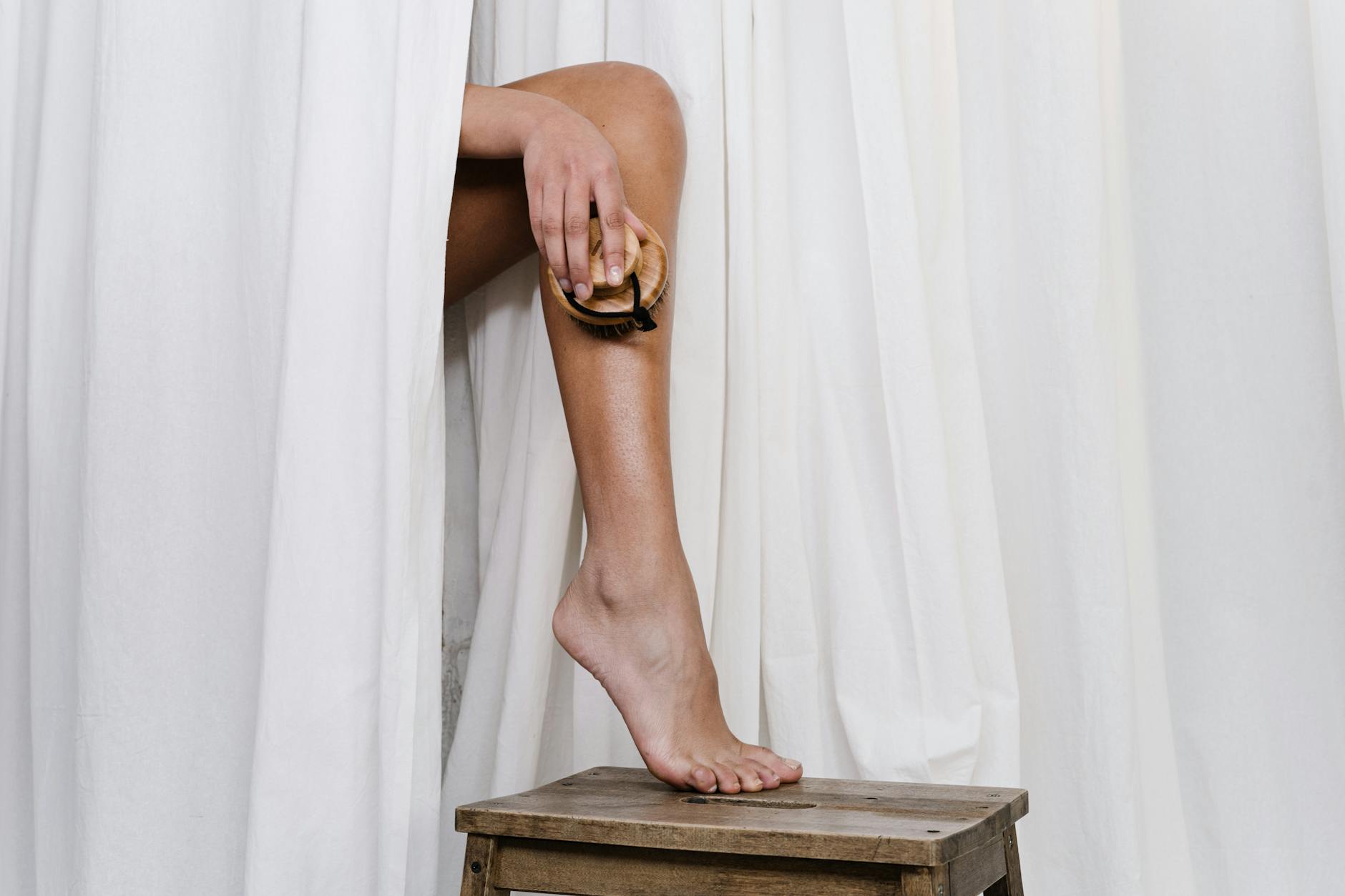
Photo by cottonbro studio
Forget old-school packaging. Now, “smart” bottles and jars are changing the way people buy and use products. Some containers use QR codes or chips that track usage, remind you to reorder, or share recycling info. This tech helps you cut waste by only buying what you need.
Digital refill systems go even further. With a few taps on your phone, you can order a refill capsule, not a whole new bottle. Some brands offer refill pouches made from compostable materials. When you're out, you just pour in the fresh product—no mess or extra plastic. This brings down shipping weight and cuts single-use packaging.
Here’s how smart packaging and digital refills help:
- Track product use: Sensors help prevent waste and prompt reordering only when needed.
- Lower packaging waste: Only the product “inside” gets delivered in most refills.
- Raise recycling rates: Smart codes give step-by-step recycling info, right from your phone.
- Build loyalty: Brands stand out by making reuse and refills simple, not a chore.
These ideas help shrink beauty’s carbon footprint one bottle at a time. It’s a smoother, more personal routine—with barely any leftover trash.
Biotechnology in Ingredient Sourcing
Biotech isn’t just for medicine—it’s pushing beauty ingredients to the next level. Labs can now “grow” vital oils, scents, and actives in controlled settings, skipping the fields and cutting back on farming impacts.
This brings real benefits:
- No overharvesting: Sourcing ingredients like rose or sandalwood through biotech means rare plants aren’t stripped from wild habitats.
- Less land, less water: Fermented or upcycled ingredients take fewer resources than crops.
- Purity and safety: Lab-grown actives are free from polluting pesticides and often trigger fewer skin allergic reactions.
Biotech lets companies use microbes—like yeast or algae—to turn natural sugars into luxe squalane, retinol, or vitamin C. These “nature-identical” ingredients mean you get high-performing formulas, but the planet gets a break. Expect this trend to speed up as more brands brag about transparent, low-impact ingredient lists.
AI and Data-Driven Sustainable Formulation
Artificial intelligence isn’t just sorting emails—it’s improving what goes in your moisturizer or shampoo. Brands now use AI to scan mountains of ingredient data. The result? Cleaner, greener formulas that do more for your skin with less waste.
Key benefits include:
- Safer ingredients: Algorithms screen out irritants and match formulas to strict eco-standards.
- Smarter combinations: AI finds new ways to blend plant oils, actives, and emulsifiers with fewer leftovers or byproducts.
- Personalized recommendations: Brands can suggest the exact product with the lowest environmental cost for your skin type and goals.
Many start-ups also use data models to cut overproduction. By predicting trends, they make only what’s needed, which means less product ends up expired or trashed.
As these technologies mature, expect zero-waste beauty to feel not only smarter but also tailored—no more guesswork, and definitely no excess junk filling your shelf or the planet.
Challenges and Future Outlook for Zero-Waste Beauty
Zero-waste beauty has picked up serious attention, but it faces tough hurdles before becoming the norm. Moving to greener routines takes more than a few swaps; it calls for real change from brands, stores, and shoppers alike. Let’s take a closer look at what’s holding the movement back and what the next few years could bring for anyone trying to build a cleaner bathroom shelf.
Addressing Cost and Accessibility
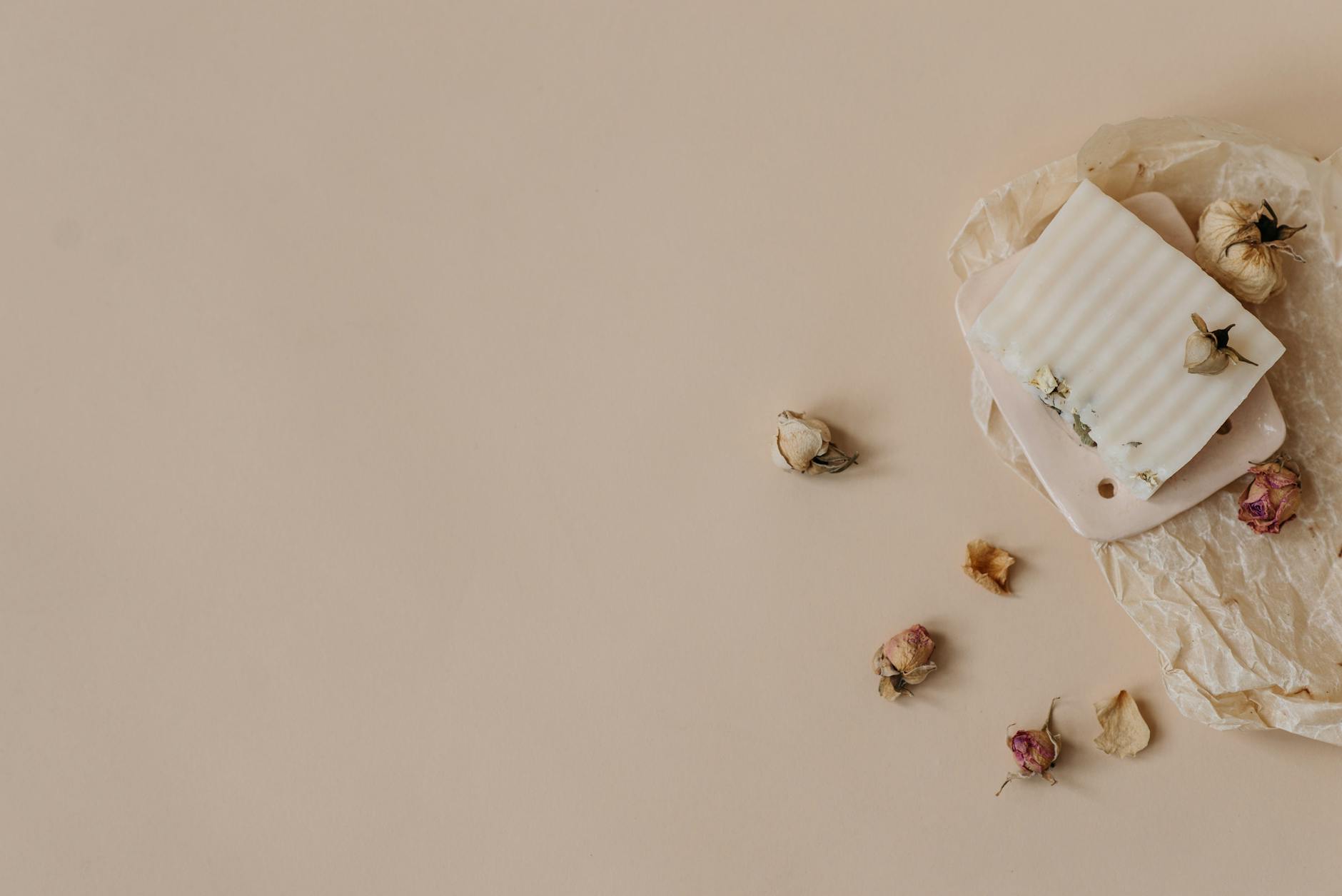
Photo by Pavel Danilyuk
Choosing zero-waste options often costs more upfront. Many eco-friendly products use better materials or smaller batches, which raises prices. This can leave out people on tight budgets or in areas without access to refills or bulk stores. It’s not always easy to find zero-waste shampoo bars or reusable makeup pads at the local pharmacy.
Some of the major hurdles brands and shoppers face:
- Higher retail prices for zero-waste formulas and packaging
- Limited choices in drugstores and big box stores
- Refill systems only available in certain cities
- Supply gaps for key ingredients or packaging components
Brands are working on it. More companies are starting to offer refills by mail and ramping up production to lower prices. Supermarkets and beauty chains are adding more green picks to their shelves. There's hope that, as demand grows, costs will drop and access will boom. But today, the price gap is hard to ignore, and it slows progress for big crowds.
Overcoming Greenwashing and Transparency Issues
Greenwashing remains a huge problem. Some brands claim to be “zero-waste” when only part of their line or packaging meets real standards. Vague terms like “eco-friendly” or “natural” can mislead shoppers trying to do their part. Without clear rules across the industry, it’s tough to know what’s honest and what’s hype.
The key challenges include:
- Loose definitions around words like “biodegradable” and “compostable”
- Lack of proof for claims on labels and ads
- Confusing recycling guidelines that differ by city or region
- Small print and missing information on sourcing and ingredient safety
Many shoppers feel burned when their efforts don’t match up with real benefits. To build trust, brands need to show real evidence—think third-party certifications, transparent ingredient lists, and packaging details that are easy to check. Consumers play a part, too, by asking questions and supporting companies that share real data.
What Lies Ahead for Brands and Consumers
The next few years will be a turning point for zero-waste beauty. Brands that commit to real change and back it up with facts will earn loyal fans. Regulations will get tougher, pushing every company to either adapt or fall behind. We’ll see a bigger shift toward refills, simple packaging, and formulas made from renewable or rescued materials.
For shoppers, expect more options at all price levels as the market keeps growing. Apps and digital tools will help track what’s truly green versus what just looks that way. Certification labels will stand out more on shelves, making it easier to compare and pick the best.
Here’s what’s coming down the line:
- Better refill programs in stores and by mail, covering everything from moisturizers to mascara.
- Industry-wide standards for what counts as zero-waste, so green claims mean something.
- Cheaper, smarter packaging with QR codes, recycling guides, or ways to earn credits for returns.
- Sharpened focus on equity, with more effort to make zero-waste affordable and easy for everyone—not just a trendy crowd.
With each small step, the movement looks set to grow, pulling more brands and buyers into a cycle that actually cuts waste, not just moves it around. The next wave of beauty will be cleaner, clearer, and easier for anyone to join.
Conclusion
Zero-waste beauty is picking up speed, fueled by real choices—better materials, refill systems, smart tech, and fresh formulas that rethink what waste means. Every step forward, from compostable jars to digital refills, moves us closer to beauty routines that feel good and do less harm.
But this isn’t just about products on a shelf. Change depends on brands that keep improving and on shoppers who ask for more. When both sides push for clear standards and honest solutions, the empty promises fade, and real progress sticks.
Thanks for reading and caring about where beauty is headed next. Share your favorite zero-waste finds or ideas in the comments—let’s keep the momentum going and shape a cleaner future together.
